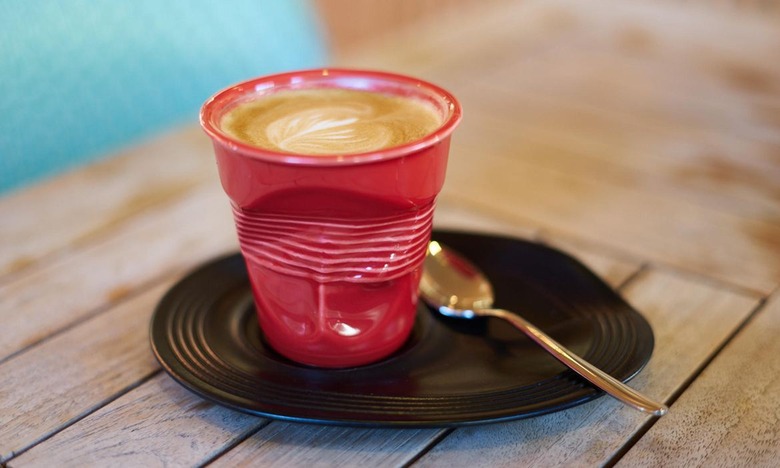14 Things You Need To Know About Ordering And Drinking Coffee In Italy
If you don't want to be taken for a tourist in Italy, abandon your regular afternoon grande latte; placing your order for one will either earn you looks of scorn or consternation. Dorothy, you, and Toto aren't in Kansas anymore. To say the Italians have a coffee culture is an understatement; it's really more like un culto di caffèe (a cult of coffee) with an entire country of zealous adherents. After a few days, you will realize what all the fuss is about and happily join the ranks of converts to this national obsession.
14 Things You Need to Know About Ordering and Drinking Coffee in Italy (Slideshow)
Never forget that, as in fashion, design, cooking, and, yes, coffee, in Italy, non è la quantità ma la qualità — it's quality rather than quantity that matters. From the beans to the coffeehouse décor and the porcelain cups for each precious drop, Italians never stint on the experience.
While their sophisticated ease of ordering and imbibing may seem second nature, Italian coffee culture isn't a recent phenomenon. It's a practiced set of traditions and rituals that have evolved over four centuries, beginning in Venice. Coffee came to this ancient Mediterranean city-state via trade with Muslims in the sixteenth century; according to a report to the senate prepared by Gianfranceso Morosini in 1585, the ambassador to Constantinople, coffee was already available in the city.
A bona fide luxury item reserved for only the wealthiest Venetians, coffee was at first considered a medicinal restorative. Eventually, the taste and boost of energy it provided made it popular; soon demand outstripped supply. Sadly, it was the spread of slave labor and coffee plantations in Asia that helped drop the price of coffee and made it affordable for a majority of Venetians, and a daily cup of caffè became de rigueur. Outgoing by nature, the Venetians preferred to drink their coffee while socializing and hearing the latest news and gossip.
In 1683, the first coffee house opened in the Piazza San Marco, starting a trend that would eventually lead to more than 200 coffee houses up and down the city's canals. Each one became a meeting place for people from every stratum of society to mingle and share ideas. They became havens for intellectuals, artists, academics, politicians, and ordinary people. One of Venice's oldest continuously owned coffee houses that has become an enduring symbol of the city is Caffè Florian. It opened on December 29, 1720, and is named for its original owner, Floriano Francesconi.
Beautifully decorated with antique mirrors, a wooden bar, marble tables, and eighteenth-century murals and woodwork, this captivating coffee house was famed for its elegant décor. But it wasn't merely coffee or sophisticated design that set Caffè Florian apart. It became famous because it was the only coffee house that allowed women, which made it fertile hunting ground for cads like Casanova.
Venice may have been coffee's entry point into Italy, but its popularity spread to Turin, Rome, and the rest of the Italian boot. Ports in Sicily as well as Bari and Naples became entry points, too. It didn't take long for the rest of Europe to fall in love with this Venetian export, and soon there were coffee houses sprouting up in England, France, Austria, and other European cities.
Baristas — the people who work the espresso machines — have long been an essential part of coffee culture in Italy, and they continue to be arbiters and interpreters of Italian taste and tradition; their reassuring presence makes Italian caffès distinct.
To make sure you don't misstep, here are some things you need to know about ordering and drinking coffee in Italy.
Summer Whitford is the D.C. Editor at The Daily Meal and also writes about food, drink, and travel. Follow her on Twitter @FoodandWineDiva, on Instagram at thefoodandwinediva, and read more of her stories here.
